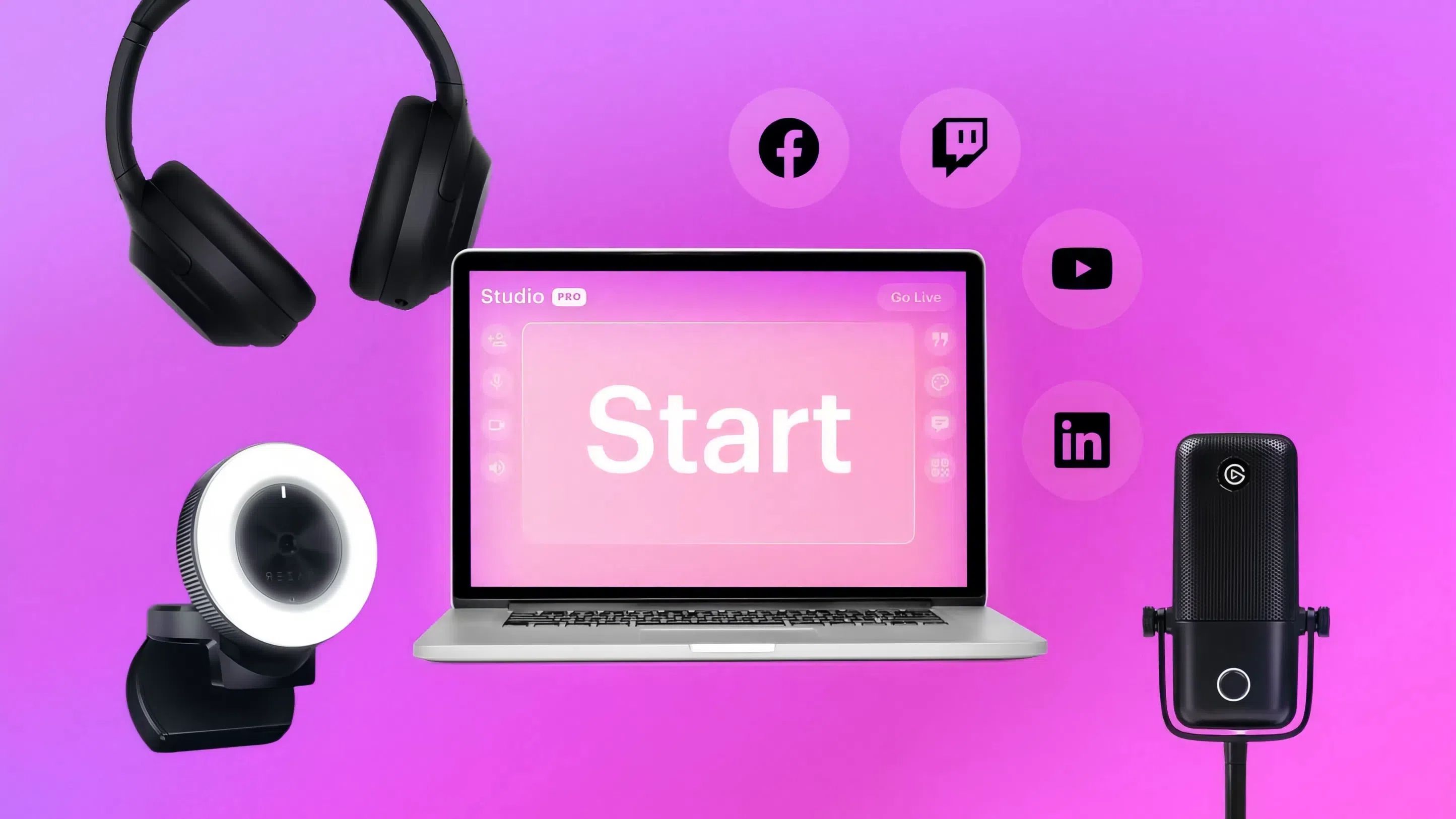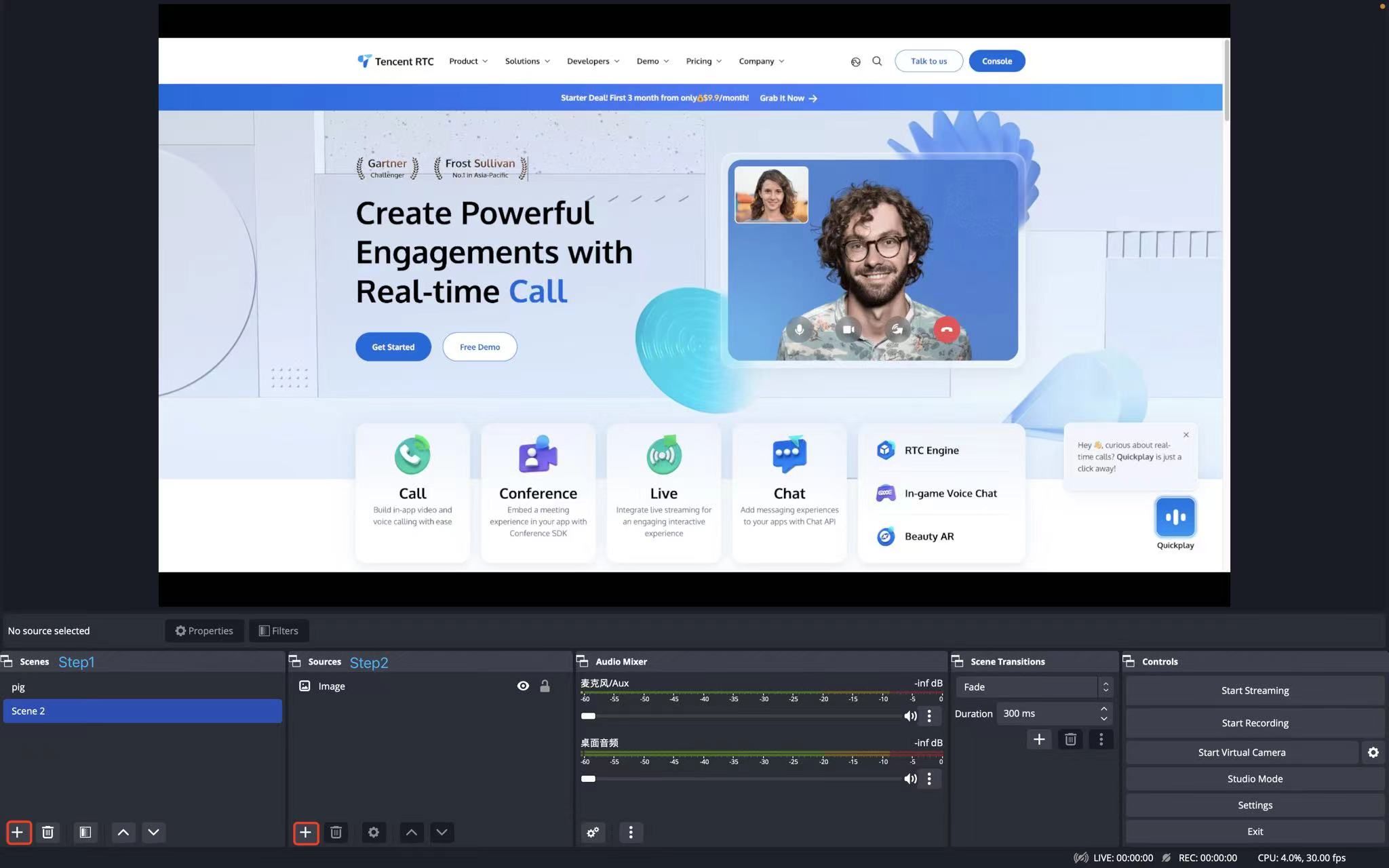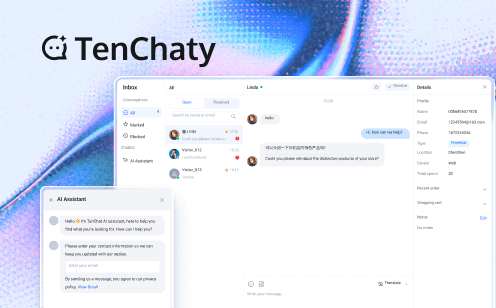Live streaming has become a popular form of entertainment and social media, with more and more people hoping to interact with their audience, showcase their talents or promote products through live streaming. If you are a novice and want to start live streaming, here are some detailed steps and streaming setup to help you enter the live streaming field smoothly.

What Streaming Setup do I Need to Start Live Streaming?
1. Determine the content and style of live broadcast
Before starting live broadcast, you need to determine the content of your live broadcast. This can be games, teaching, life sharing, artistic creation, etc. Choose the field you are passionate about and consider your live broadcast style, such as humor, educational, casual chat, etc. Clarify who your target audience is and what their interests and needs are. This will help you customize the content of your live broadcast to better meet the expectations of the audience.
2. Prepare your live streaming equipment
Nowadays, live streamers tend to use mobile phone cameras. But if you want to provide professional-level visuals for your audience, it is recommended to use a professional camera.
If you want high-quality visuals, your camera must support high resolution. Full HD is the minimum requirement, while 4K is usually ideal.
- Camera: An HD camera is necessary to capture clear images.
- Microphone: A good microphone can provide clear audio and enhance the viewing experience of your audience.
- Stable Internet Connection: Make sure your network connection is stable to avoid interruptions in your live stream.
- Computer or mobile device: Depending on the platform you choose, you may need a good computer or smartphone.
If you plan to stream, you will need to add an additional HDMI cable and a long Ethernet cable. In addition to this, you will also need a capture card. It can copy the audio and video of the console and send it to the computer as a video input, which the streaming software then recognizes and streams.
3. Choose the right live streaming platform
There are many live streaming platforms to choose from, such as Twitch, YouTube Live, Facebook Gaming, TikTok LIVE, etc. Each platform has its specific user groups and features. Choose a platform that matches your content and target audience. At the same time, understand the rules and policies of the platform to ensure that your live content does not violate the regulations.
Here are some of the popular live streaming platforms internationally in 2024:
- Twitch: As the world's largest game live streaming platform, Twitch attracts a large number of gamers and viewers. It provides high-definition live broadcasts, interactive chat functions, and various community interaction tools. Twitch also provides partners and affiliate programs that allow anchors to make money through advertising, subscriptions, and donations.
- YouTube Live: As the world's largest video sharing platform, YouTube's live streaming service allows users to live broadcast a variety of content, including games, education, music, etc. YouTube Live provides powerful analytical tools, money-making opportunities, and extensive access to global audiences.
- Facebook Gaming: Facebook Gaming uses Facebook's huge user base to provide users with a platform to share games and watch live broadcasts. It allows anchors to earn income through fan support, virtual gifts, and subscriptions.
- TikTok LIVE: TikTok is more than just short videos. You can also live stream for 30 minutes or longer. Go live on TikTok, build a strong connection with your followers, and stand out from the thousands of other creators on the platform.
Of course, if you want to live stream on FaceBook and TikTok at the same time to double your exposure with the same amount of work, you can use Restream to multi-stream.
4. Live streaming with OBS
If you are used to live streaming with MAC or Window software, we will introduce you to live streaming with OBS (Open Broadcaster Software).
OBS is a free and open source video recording and live streaming software that supports multiple platforms, including Windows, macOS, and Linux. It allows users to customize every aspect of live streaming, from video sources to audio settings to scene switching. In addition, OBS is compatible with Twitch, YouTube, and other live streaming platforms.
For detailed instructions on using OBS, please refer to the next chapter.
5. Set up your live broadcast environment
- Background: Choose a clean, tidy background to avoid clutter that distracts your audience.
- Lighting: Make sure there is enough light so the camera can capture your facial expressions and movements.
- Sound Environment: Keep the environment quiet or use noise cancellation technology to reduce background noise.
How to Use OBS for Live Streaming?
By referring to the OBS operation guide below, we can easily start a live stream:
1. Download and install OBS.
2. Set up the scene and sources:
- Scene: A scene is a logical grouping in your live stream that can contain multiple sources. For example, you can have one scene for your game stream and another for your webcam.
- Source: A source is a single element in your live stream, such as a window capture, game capture, image, text, etc.

3. Configure video and audio:
In the Settings menu, select the Video and Audio tabs.
Adjust the resolution, frame rate, and audio device to match your hardware and network conditions.
- Resolution: Start by setting your video resolution to 1920×1080 pixels, commonly referred to as 1080p HD. This resolution strikes a balance between video quality and bandwidth usage. It ensures that your content appears crisp and clear while also being accessible to viewers with varying internet speeds.
- Frame rate: Select a frame rate of 30 frames per second (fps). This standard frame rate provides smooth, fluid motion for your live stream. It prevents choppiness and keeps motion natural and smooth, making your content more enjoyable to watch.
- Bitrate: Set your bitrate to a range between 4.5 and 6 Mbps. Your bitrate determines the amount of data transmitted per second in your live stream. Your goal is to find a balance between video quality and bandwidth availability. Adjust your bitrate based on your available upload speed and desired video quality. Higher bit rates result in better video quality but require more bandwidth.
4. Set up the live streaming service:
- Select File -> Settings -> Stream.
- Select the streaming platform you want to use.
- Enter your streaming key (can be obtained from your streaming platform).
5. Start live streaming.
6. Monitor and adjust:
OBS provides real-time statistics, including CPU and memory usage, as well as encoder load.
Adjust settings as needed to optimize performance.
What Other Aspects Need to be Considered for Live Streaming?
1. Test live broadcast
It is very important to conduct several test live broadcasts before officially starting the live broadcast. This can help you check the quality of audio and video, and whether the function of the live broadcast platform is normal.
2. Make a live broadcast plan
Regular live broadcasts can help you build a loyal audience. Make a live broadcast schedule and try to stick to it. At the same time, you should also consider the active time of the audience and choose the best live broadcast time.
3. Interact with the audience
One of the charms of live broadcast is real-time interaction. Interacting with the audience through chat, Q&A, voting, etc. can increase the audience's sense of participation and loyalty.
4. Promote your live broadcast
Use social media and other channels to promote your live broadcast. Tell your friends, family and fans to let them know your live broadcast time and content.
5. Collect feedback and optimize
Actively collect feedback from viewers to understand what they like, what they don’t like, and what they want to see. Adjust your live broadcast content and style based on feedback and continuously optimize your live broadcast experience.
6. Continuous learning and growth
Observe successful live broadcasters and learn their skills and strategies. Continuously improve your professional skills, whether it is live broadcast skills, content creation or interactive ability.
7. Follow the rules and laws
Each live streaming platform has its own rules and policies, make sure you understand and follow them. In addition, you must comply with relevant laws and regulations, such as copyright and privacy laws.
8. Maintain a good live streaming environment
Make sure the live streaming content is healthy and positive, and avoid inappropriate or sensitive topics. Respect the audience and other live streamers, and avoid any form of discrimination and insults.
Conclusion
Live streaming is a field full of challenges and opportunities. With the above guidelines, you can gradually build your own live streaming career. Remember, the most important thing is to maintain enthusiasm and patience, and keep trying new ways to attract and keep viewers. I wish you success in live streaming!
Tencent Real-Time Communication (TRTC) offers significant advantages for live streaming, making it a preferred choice for content creators and businesses alike. With its low-latency technology, Tencent RTC ensures that live broadcasts are delivered in real-time, providing viewers with an immersive and interactive experience. The platform supports high-quality audio and video transmission, enabling seamless streaming even in challenging network conditions.
If you have any questions or need assistance online, our support team is always ready to help. Please feel free to Contact us or join us on Telegram or Discord.


